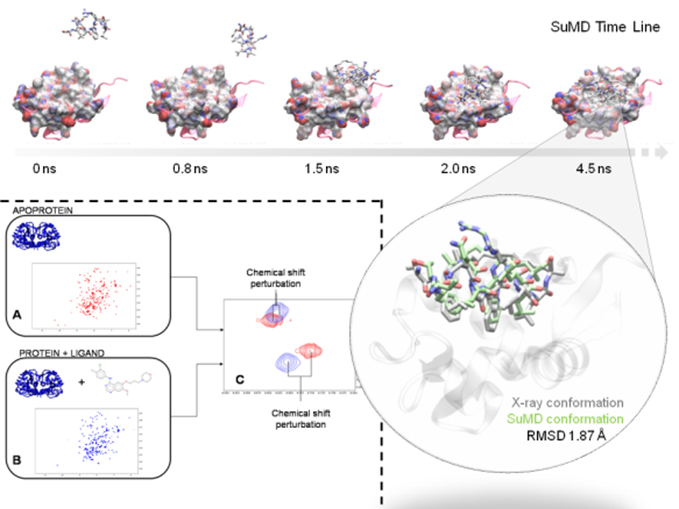Drug Design and Synthesis
Topic: The Molecular Modeling Section constitutes the interface among biological/pharmacological and chemical laboratories of DSF, by adding computational expertises as needed in organic synthesis, biochemistry, molecular biology and pharmacology.
Researchers: Stefano Moro; Mattia Sturlese; Veronica Salmaso
Topic: Development of novel synthetic strategies for the development of organic and metal-based drugs or radiopharmaceuticals targeting disease specific molecular determinants.
Researchers: Adriana Chilin; Andrea Mattarei; Alessandro Dolmella
Current research interests:
- Computer-aided engineering of G protein-coupled receptor (GPCR) ligands
- Computational strategies in discovery of novel of protein kinase inhibitors
- Development of novel chemoinformatics tools for drug discovery
- QSAR approaches in medicinal chemistry and environmental toxicology
- Fragment-based Drug Discovery by NMR
- Molecular Recognition coupling In silico and spectroscopic techniques
- Nitrogen containing heterocycles able to impair the activity of several tyrosine kinases (e.g. Abl, Src, EGFR, FGFRs, VEGFR2, PDGFRa, PDGFRb, KIT, CSF1R, FLT3)
- Esmethadone-like (REL-1017) and Other Uncompetitive NMDAR Channel Blockers
- New chemical probes for organelle-specific real-time calcium imaging
- Coordination compounds based on transition metals (mainly of Groups 7 and 11)
 |  |
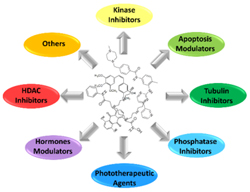 | Anticancer compounds Cancer is still a leading cause of death worldwide. We are interested in the synthesis and development of novel molecular entities for targeted therapy. Our main targets are tubulin, aromatase, kinases, phosphatases and ion channels. |
read more
Aromatase inhibitors. Estrogens play a crucial role in the development and progression of breast cancer. The biosynthesis of estrogens from androgens is catalyzed by a complex enzyme “aromatase” CYP19. Aromatase inhibitors (AIs) can be both steroidal and non steroidal compounds and act by reducing the biosynthesis of estrogens in both pre- and post-menopausal women. Selective and potent non-steroidal inhibitors like Fadrozole, Letrozole, or Anastrozole are currently being compared with Tamoxifen in first-line metastatic, adjuvant, and neoadjuvant settings. Unfortunately, currently used AIs have many drawbacks like toxicity and resistance. The latter has been confirmed as the major obstacle to optimal anti-cancer therapy management. Our research is focused on the design and synthesis of azolylmethyl-pyrroloquinolines as potent and selective non-steroidal aromatase inhibitors.
Maria Grazia Ferlin
Tyrosine kinase Inhibitors. Kinase inhibitors are attractive drugs/drug candidates for the treatment of cancer. The most recent literature has highlighted the importance of multi target kinase inhibitors, although a correct balance between specificity and non-specificity is required. Our research is mainly focused on the discovery and development of nitrogen containing heterocycles (e.g. quinazolines, quinazolinones, aryl-pyrimidines, fused-pyrimidines) able to impair the activity of several tyrosine kinases (e.g. Abl, Src, EGFR, FGFRs, VEGFR2, PDGFRa, PDGFRb, KIT, CSF1R, FLT3) bearing the 4-anilinoquinazoline.
Adriana Chilin, Giovanni Marzaro
Casein kinase 2 (CK2) inhibitors. In this study, we are combining our efforts with the ones of biochemists and with data from X-ray crystallography to understand the molecular “key-points” that are required for an efficient small molecule-protein interaction. We must anyway keep in mind that the QSARs are often referred to a static molecule and a static protein. In this perspective, in collaboration with the Department of Chemical Sciences, we are also considering EPR as a possible tool to gain insights on timescale of the interaction.
Giuseppe Zagotto
Multi-acting compounds. Cancer is a multifactorial disease and recent findings have highlighted the importance of a multi-target approach for cancer treatment: the simultaneous blockade of different pathways involved in the cancer growth leads to a more effective therapy, with reduced drug resistance phenomena onset. As a matter of fact, the co-administration of drugs with different mechanism of actions is largely more effective than the administration of a single drug. However, the multi-target approach can be pursued also through a single agent endowed with multiple potency, i.e. a single compound able to inhibit more targets. As recently shown, the administration of a single multi-target compounds leads to higher potency and lower side effects when compared with the co-administration of different target-selective agents. Our research is mainly focused on the synthesis and development of compounds endowed with dual kinase/HDAC or dual kinase/tubulin inhibitory potency.
Giovanni Marzaro
Organo-selenium compounds. Selenium is an essential trace element involved in many fundamental biological processes. However, the understanding of Se potential in cancer therapy has expanded greatly in recent years and has opened a new research perspective in the development of Se-based anticancer agents. The research is focused on the synthesis of organoselenium compounds in which the Se is combined with chemical scaffolds endowed with kinase inhibitory activity.
Giovanni Marzaro, Giuseppe Zagotto
Phosphatase modulators. While the majority of past and current anticancer strategies are pointed at interfering with factors that induce and promote deregulated proliferation, a recent research branch aims at switching on, or boosting, pro-apoptotic cellular signaling functions. Some of the cellular defenses against uncontrolled proliferation, and Protein Phosphatase 2A (PP2A) is among these, are down-regulated in a number of cancers due to the association with their natural inhibitors, that are often overexpressed in these pathologies. Targeting and disrupting this silent complex, we re-establish the natural pro-apoptotic role of the phosphatase. This research is focused on the synthesis of novel sphingosine analogues as innovative anticancer agents.
Giuseppe Zagotto
Tubulin polymerization inhibitors. Antimitotics binding to the colchicine site of tubulin are important antitumor and vascular disrupting agents. Upon ligand-based drug design, the synthesis and evaluation of phenylpyrroloquinolinones (PPyQ) as anticancer agents started taking the known antimicrotubule 2-phenylquinolinone as pharmacophore to be modified in order to obtain molecules characterized by better fitting at the colchicine binding site into tubulin and a higher potential as drugs. During the past ten years we are developing phenylpyrroloquinolinones of various angular geometry and carrying various substitutions in order to understand structure-activity relationships for the anticancer and antiangiogenic activities. Very interesting results on their strong antiproliferative activity and mechanism of action were obtained that are the object of numerous papers published in prestigious international journal of medicinal chemistry. The last series of 7-PPyQs derivatives shows anticancer properties similar and even better than clinically used natural antimitotics.
Maria Grazia Ferlin
Mitochondrial ion channels modulators. Mitochondria are important oncological targets, one reason being their crucial role in apoptosis. Various ion channels display an altered expression level in the mitochondria of many cancerous cells with respect to healthy ones. Mitochondria-targeted inhibitors of the potassium channel mtKv1.3 we produced have been recently used successfully to selectively eliminate cancer cells in in vivo cancer models (Leanza et al., Cancer Cell, 2017). As part of a collaborative project coordinated by Prof. Ildikò Szabò (Department of Biology (UniPD)) we now intend to develop and test in vitro and in vivo new mitochondria-targeted modulators of ion channels displaying tissue-dependent overexpression patterns in various cancer types.
Andrea Mattarei
 |  |
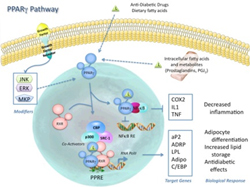 | Antinflammatory agents
|
read more
Hydroxypyridincarboxylic acids as anti-inflammatory, antivirulence and antiamiloidosi potential agents
The hydroxypyridincarboxylic acid is the aza-analog of salicylic acid in which a carbon atom has been substituted by a nitrogen one. Some of alkyl substituted derivatives prepared and studied for the chelation therapy of Fe(III) and Al(III), showed to exert an interesting in vitro and in vivo anti-inflammatory activity through activation of the nuclear receptor PPARg. Recently, a series of phenyl-hydroxypyridincarboxylic acids have been designed as water soluble aza-analogs of Diflunisal, an FDA-approved nonsteroidal anti-inflammatory drug found to possess antivirulence activity by interfering with the quorum sensing system of the most widespread bacterial pathogen in the developed world: Methicillin Resistant Staphylococcus Aureus (MRSA). Our research is now focusing on the synthesis of novel phenyl-HPs and the evaluation of their biological properties.
Maria Grazia Ferlin
 |  |
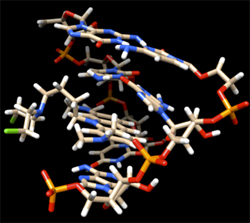 | Chemical probing We are developing a set of low molecular weight chemical entities as tools to investigate complex supermolecular arrangements and to measure the concentration of some metal cations in specific organelles. |
read more
Chemical probing of macromolecular structures
We aim to provide a set of small molecules that can interact with macromolecules such as nucleic acids and be used as probes. This technique may help the investigation of peculiar arrangements, such as flexible and transient structures, where solution NMR and crystallography may not find application. We are now interested in probing RNA and DNA in single strand, double strand and other non-conventional arrangements.
Giuseppe Zagotto
New chemical probes for organelle-specific real-time calcium imaging. Calcium signalling is a major signal transduction pathway in living cells. For this reason, many efforts have been devoted to the generation of tools to measure intracellular Ca2+ concentration ([Ca2+]). Currently, cytosolic [Ca2+] can be routinely measured using standard fluorescence microscopy techniques. Attention has moved to Ca2+ dynamics inside intracellular organelles, such as the mitochondria or the endoplasmic reticulum (ER), and the need for organelle-targeted indicators has become critical. Only a few ion-sensing “chemical” dyes and some genetically encoded Ca2+ indicators (GECIs) targeted to specific organelles have been developed so far, and they suffer from various drawbacks: dyes do not show acceptable selectivity for the target compartment, while GECIs require invasive procedures, not tolerable by all cell types. In collaboration with the research group of Prof. Tullio Pozzan and Dr. Diana Pendin (Department of Biomedical Sciences, UniPD) we aim to develop new tools to monitor [Ca2+] in “real time” in specific subcellular compartments. The development of these tools will help to elucidate signaling pathways involving Ca2+, providing valuable insight into biological processes under physiological or pathological conditions.
Andrea Mattarei
 |  |
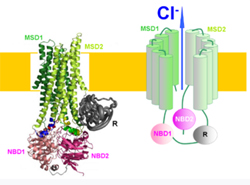 | Cystic Fibrosis treatment Cystic Fibrosis treatment. Cystic fibrosis (CF) is a progressive, genetic disease that causes persistent lung infections and inflammation status with limited ability to breathe over time. Current therapy is “symptomatic” (improving the lung function with airway clearance techniques and intensive antibiotic treatments). We are interested in the development of anti-inflammatory agents (NF-kB inhibitors) and modulators of CFTR activity. |
read more
CFTR modulator
CFTR is a chloride ion channel deputed to the regulation of airway epithelium hydration. Expression of DF508-CFTR is a major cause of cystic fibrosis (CF) disease. The trafficking of DF508-CFTR is dramatically impaired, leading to retention in the endoplasmic reticulum and reduction in chloride ion secretion. CFTR defective activity results in dehydrated mucous production that predispose to P. Aeruginosa infection and inflammation. Bacterial infection, in turn, enhances pro-inflammatory stimuli, further impairing the lung functions. Our goal is to develop novel compounds able to restore the DF508-CFTR trafficking either through a direct interaction with the ion channel or through the modulation of the pathways involved in protein processing.
Adriana Chilin, Giovanni Marzaro
NF-kB inhibitors
Chronic inflammatory response in the airway tract of CF patients is characterized by an excessive recruitment of neutrophils to the bronchial lumina, driven by the chemokine interleukin (IL)-8. TMA (4,6,4'-trimethylangelicin) inhibits P. aeruginosa-dependent IL-8 transcription at nanomolar concentration in different CF-derived bronchial epithelial cells. Moreover, TMA demonstrated to behave both as CFTR potentiator and corrector. Our goal is to identify TMA analogues with anti-inflammatory activity favoured over the modulation function (CFTR correction/potentiation), opportunely introducing specific substituents in the furocoumarin backbone.
Adriana Chilin, Giovanni Marzaro
 |  |
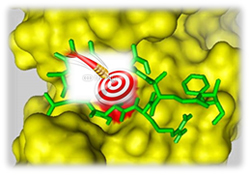 | Metals in Medicine Underpinning the role of metals in the diagnosis and therapy of cancer and other diseases. |
read more
Bioiniorganic Chemistry
Under the banner ‘Metals in Medicine’ can be gathered a number of investigations referring to the therapeutic role of metal complexes in different contexts. Moving from the reported effects of gold salts in rheumatoid arthritis, as well as from the vast literature about anticancer platinum compounds, we have been involved in the research and development of novel Group 10 and 11 complexes with suitable ligands. Among metal investigated there were also Au and Cu, for which a plethora of studies highlighted an high potential as antitumor agents able to overcome platinum cross-resistance. Our plan is to deepen knowledge, on the chemical and structural side, of promising new metal-based agents.
Alessandro Dolmella
Metal-based Radiopharmaceuticals
Under the head of radiopharmaceuticals, we gather all the compounds harboring a radioactive element. Different radionuclides (alpha, beta minus/beta plus, gamma emitters) prove eligible, according to their properties, for developing new tracers or anticancer drugs. The paradigmatic element is Tc-99m, which is still the leading nuclide in SPECT imaging. With increasing relevance of PET radiopharmaceuticals, new metals such as Cu-64, Ga-67, Lu-177 are gaining momentum, especially when the nuclide can behave as theranostic, that is, to be used at once for selective targeted delivery of radio-drug to the tumor site and simultaneous scintigraphic monitoring of the delivery itself. We are engaged in the recognition, development and optimization of new metal based radiopharmaceuticals to be used in SPECT/PET diagnosis as well as in therapy.
Alessandro Dolmella
 |  |
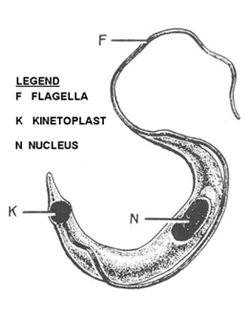 | Neglected Tropical Diseases |
read more
Trypanothione disulphide-reductase inhibitors
Chagas disease, which is caused by Trypanosoma cruzi (T. cruzi), remains a substantial public health concern and an important cause of morbidity and mortality in Latin America. Current knowledge of the biochemistry of Trypanosoma cruzi has led to the development of new drugs and the understanding of their mode of action. An important target is the biosynthetic pathway of glutathione and trypanothione, the low molecular weight thiol found exclusively in trypanosomatids. These thiols scavenge free radicals and participate in the conjugation and detoxication of numerous drugs. Inhibition of this key pathway trypanothione reductase could render the parasite much more susceptible to the toxic action of drugs such as nifurtimox and benznidazole without affecting the host significantly. With a virtual scrrening approach on the structure of TryR some derivatives of THBCA were identified as good candidates for TryR inhibitors, with the b-carboline as a key group in the discovery and rational design of potential inhibitors of TryR.
Maria Grazia Ferlin
 |  |
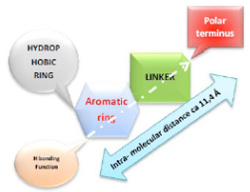 | NR natural ligand modification to obtain novel retinoids
ROR and RAR (Retinoid-related Receptors) are nuclear receptors also involved in the development of several autoimmune disorders such as rheumatoid arthritis, Crohn disease and psoriasis. |
read more
NR RORγt inverse agonists for autoimmune disorders.
RORγ (Retinoid-related Orphan Receptor γ) is a nuclear receptor involved in the development of several autoimmune disorders such as rheumatoid arthritis, Crӧhn disease and psoriasis. RORγ function is to induce the production of interleukin 17, a strongly pro-inflammatory cytokine, which is over-expressed in autoimmune pathologies, such as multiple sclerosis. Recent studies notice that counteracting the expression of IL-17 using molecules able to act as inverse agonists toward RORγt should provide a good chance to treat autoimmune diseases.The design and synthesis of RORγ inverse agonists is aimed to obtain a small library of compounds based on the cyclopentaneperhydrophenanthrene scaffold, variously substituted to confer receptor selectivity.
The lead molecule is a derivative recently synthesized which had been identified through a structure based drug design approach and docking simulation on the RORγ protein structure.
Maria Grazia Ferlin
 |  |
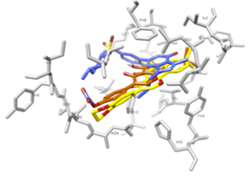 | Phosphodiesterase 5 inhibitors |
read more
Phosphodiesterase 5 inhibitors
PDE5-Is are non-hydrolysable cGMP analogues that act by slowing the degradation of cGMP by PDE-5 and, thus, promote vasorelaxation in the target tissue. Moreover, the activity of PDE5-Is against heart diseases, cystic fibrosis, cancer, diabetes and neurological disorders, to name a few, has been variously reported and, currently, nearly 100 clinical trials involve these compounds only for what concerning their applications on cardiovascular system. Natural flavonoids represent a wide, well documented class of biologically active molecules and some isoflavones, in particular, have been recently reported to inhibit phosphodiesterases and promote relaxant effect on animal models. We are developing a set of semi-synthetic flavonoids to target PDE5.
Giuseppe Zagotto
 |  |
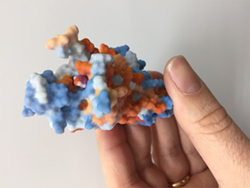 | Molecular Modeling Section (MMS) The Molecular Modeling Section (MMS) constitutes the interface among biological/pharmacological and chemical laboratories in its Department, adding computational expertises as needed in organic synthesis, biochemistry, molecular biology and pharmacology. In the spirit of the motto "interdisciplinarity is dialog" the aim of MMS is to face medicinal chemistry and medical problems in collaboration with experts of the field... not mixing their expertises, but summing them up. Please visit our website: mms.dsfarm.unipd.it |
read more
Main Research Interests:
- Computer-aided engineering of G protein-coupled receptor (GPCR) ligands
- Computational strategies in discovery of novel of protein kinase inhibitors
- Development of novel chemoinformatics tools for drug discovery
- QSAR approaches in medicinal chemistry and environmental toxicology
For details, please visit our website: mms.dsfarm.unipd.it
read more
Fragment-based Drug Discovery by NMR in Cancer Research. FBDD is one of the most efficacious methods to discover novel high-affinity ligands. The key concept if FBDD is the identification of one or multiple small organic molecules (i.e. fragment, MW < 300 Da), event with a weak affinity, but which chemical combination or growing leads to a potent binder. The screening of small fragments has several advantages: (i) it facilitates larger sampling of chemical space; (ii) a higher hit rate; (iii) generation of binders with better ligand efficiency (LE) and more hydrophilic. NMR spectroscopy is ideally suited for fragment-based screening because it can reliably detect weak binders.
We are particularly focusing our efforts to identify novel inhibitors of the anti-apoptotic members of the Bcl-2 family (e.g. Bcl-Xl, Bcl2A1, Mcl-1). Anti-apoptotic members of Bcl-2 family play a key role in the regulation of apoptosis; by overexpression of these proteins or amplification of their genes, a cancerous cell can avoid death, the normal fate of cells exhibiting abnormal and deregulated growth.
Mattia Sturlese
read more
Investigation of Molecular Recognition coupling In silico and spectroscopic techniques. Molecular recognition is a key issue when aiming to interpret the mechanism behind the interaction between molecules that lead to bioactivity phenomena. We aim to develop new methods to investigate two aspects of binding events:
(i) Fast and reliable determination of protein-ligand conformation in the bound state through coupling Molecular Docking and with chemical shift data
(ii) Investigate the molecular events characterizing the molecular association between ligand and their target using Molecular Dynamics and NMR.
The ultimate goal is to improve the rationalization in the design of new drug speeding up the early stages of the discovery process.
Mattia Sturlese
 |  |
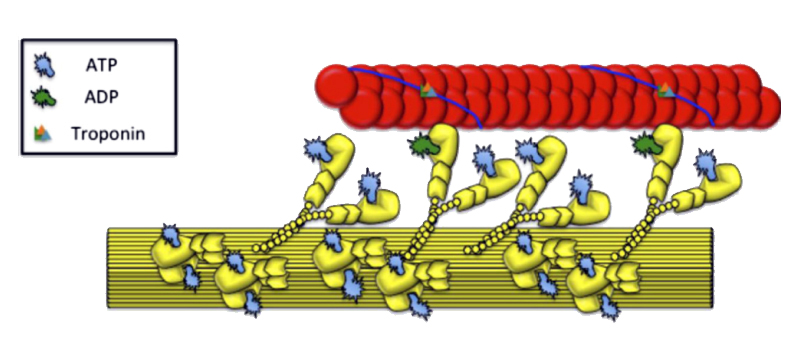 | Antiobesity compounds The incidence of obesity and associated pathologies, such as type 2 diabetes and cardiovascular diseases, is increasing dramatically. New pharmacological interventions to prevent or cure obesity are strongly needed. We are exploring a new pharmacological target in the treatment of obesity, which is based on the modulation of the metabolic rate of resting skeletal muscle. |
read more
New modulators of myosin super-relaxed state. Prof. Roger Cooke, at the University of California (UCSF) has recently shown that the metabolic rate of resting skeletal muscle can be increased by shifting myosin heads from the super-relaxed state (SRX), with a low ATPase activity, to a disordered relaxed state (DRX), with a higher ATPase activity. A high-throughput screen of 2,128 compounds identified piperine, the main alkaloid component of black pepper, as a chemical perturber of the SRX state. Since piperine does not have the properties required to be a pharmaceutical in humans, in collaboration with the research group of Prof. Cooke (UCSF), the research group of Dr. Bert Blaauw (Department of Biomedical Sciences (UniPD)) and researchers at the Department of Pharmaceutical and Pharmacological Sciences (Prof. Giovanni Marzaro and Dr. Mattia Sturlese) we aim to develop improved perturbers of the myosin SRX state by means of synthetic organic chemistry and computational tools. The development of such modulators would provide the basis for new therapies to treat obesity and associated pathologies by increasing energy dissipation by resting skeletal muscle.
Andrea Mattarei






